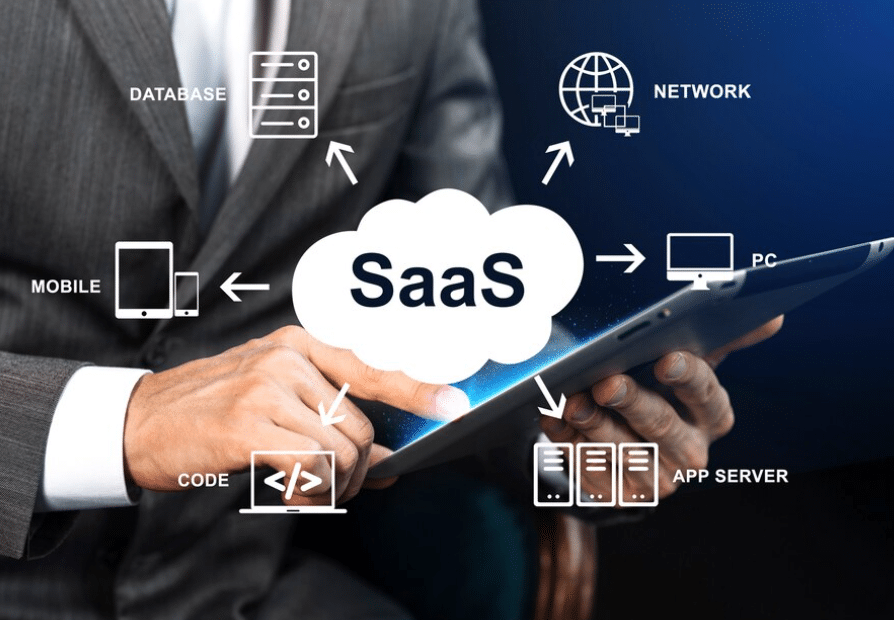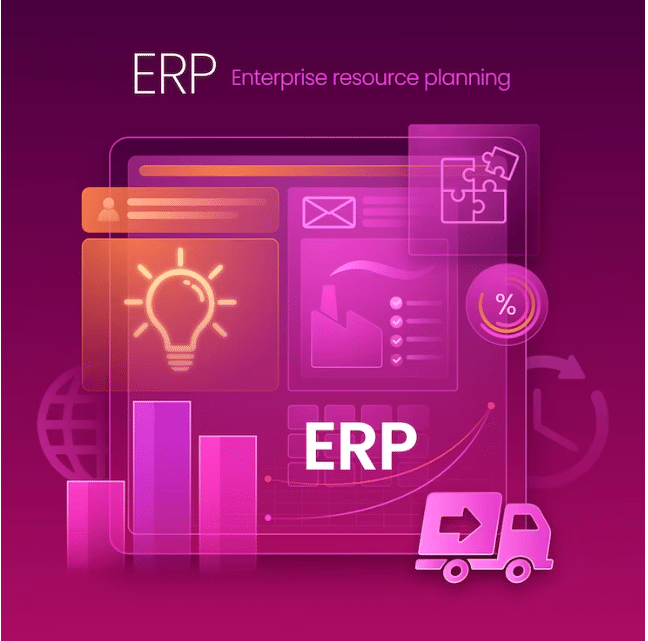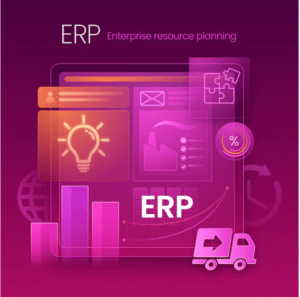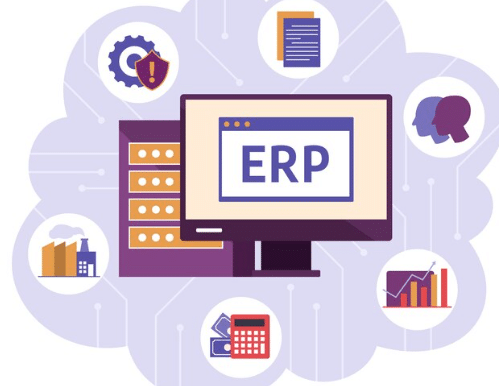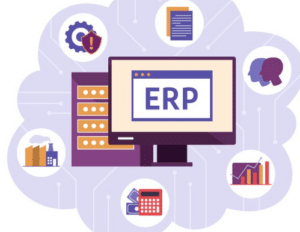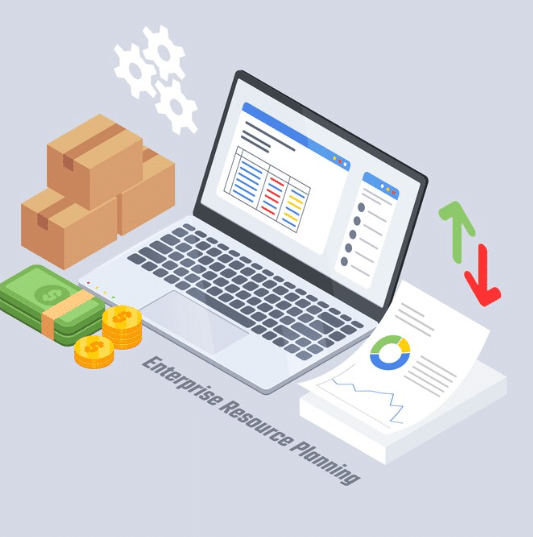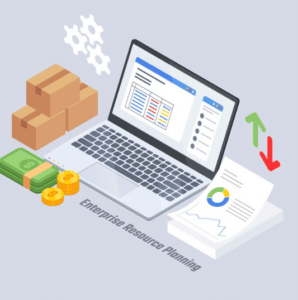ERP Online-In the ever-evolving landscape of business technologies, Enterprise Resource Planning (ERP) has undergone a significant transformation with the advent of ERP Online solutions. This article aims to provide a comprehensive exploration of ERP Online, focusing on its definition, evolution, key features, benefits, implementation strategies, and the future trends that are reshaping the way organizations manage their resources and operations. 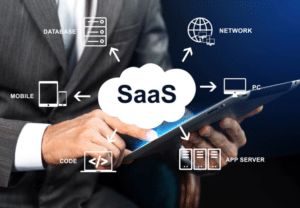
A. Definition and Overview
ERP Online represents a paradigm shift in how businesses approach resource planning and management. This section defines ERP Online, highlighting its cloud-based nature and outlining the fundamental concepts that set it apart from traditional ERP systems.
B. Evolution of ERP Online
The evolution of ERP Online is essential to understanding its current capabilities. This subsection traces the historical development of ERP Online solutions, exploring the technological advancements that have paved the way for cloud-based ERP to become a cornerstone of modern business management.
II. Key Features of ERP Online
Understanding the key features of ERP Online is crucial for organizations considering a shift to cloud-based solutions. This section breaks down the core functionalities that define ERP Online and explores how these features contribute to enhanced agility and efficiency.
1. Cloud-Based Infrastructure
The cloud-based infrastructure is the foundation of ERP Online. This subsection delves into the benefits of cloud deployment, including accessibility, scalability, and reduced infrastructure costs.
2. Real-Time Data Access and Collaboration
One of the hallmarks of ERP Online is its ability to provide real-time data access and collaboration. Explore how this feature fosters better communication and decision-making across the organization.
3. Mobile Accessibility
With the rise of remote work, mobile accessibility has become a crucial feature. This component discusses how ERP Online solutions empower users to access critical information anytime, anywhere, using mobile devices.
4. Integration Capabilities
Integration with other business systems is a key strength of ERP Online. This part explores how seamless integration enhances data flow and eliminates silos, creating a holistic view of organizational processes.
III. Advantages of Adopting ERP Online
The adoption of ERP Online brings forth a plethora of advantages for organizations seeking to modernize their operations. This section systematically outlines these benefits, showcasing how ERP Online positively impacts various facets of organizational management.
A. Cost Savings and Resource Efficiency
Explore how ERP Online solutions contribute to cost savings by eliminating the need for extensive hardware infrastructure, reducing maintenance costs, and optimizing resource utilization.
B. Enhanced Security Measures
Security is a top concern in the digital age. This subsection discusses how ERP Online solutions implement robust security measures, safeguarding sensitive data and ensuring compliance with industry regulations.
C. Flexibility and Scalability
Flexibility and scalability are inherent to ERP Online. Discover how organizations can easily adapt to changing business needs and scale their ERP solutions as they grow.
IV. Implementation Strategies for ERP Online
Implementing ERP Online requires careful planning and execution. This section outlines key strategies for a successful ERP Online implementation, addressing considerations such as data migration, user training, and change management.
A. Data Migration Planning
Effective data migration is critical for a smooth transition to ERP Online. Explore strategies for planning and executing data migration, ensuring minimal disruption and data integrity.
B. User Training and Change Management
User adoption is pivotal for ERP success. This part emphasizes the importance of comprehensive user training programs and effective change management strategies to facilitate a smooth transition for employees.
C. Vendor Selection and Collaboration
Choosing the right ERP Online vendor is a crucial decision. This subsection provides guidance on selecting a reliable vendor, assessing their capabilities, and fostering a collaborative partnership.
V. Case Studies: Successful ERP Online Implementations
Real-world examples provide tangible evidence of the effectiveness of ERP Online solutions. This section presents case studies of organizations that have successfully implemented ERP Online, showcasing the transformative impact on their operations.
A. Global Retailer: Streamlining Supply Chain Operations
Explore how a global retailer streamlined its supply chain operations and improved inventory management through the successful implementation of ERP Online.
B. Tech Startup: Scaling Operations with Cloud ERP
Delve into the case study of a tech startup that leveraged ERP Online to scale its operations rapidly, enhance collaboration among remote teams, and achieve significant business growth.
VI. Challenges in ERP Online Implementation
While the benefits of ERP Online are substantial, challenges may arise during implementation. This section identifies common challenges faced by organizations adopting ERP Online and provides insights into overcoming these hurdles.
A. Connectivity and Downtime Concerns
Explore how organizations can address concerns related to connectivity and downtime during the transition to ERP Online, ensuring minimal disruptions to daily operations.
B. Customization Complexity
Customization is often necessary to align ERP Online solutions with specific organizational needs. This component delves into the challenges associated with customization complexity and offers guidance on striking the right balance.
C. User Resistance in the Cloud Transition
User resistance can pose a challenge during the transition to cloud-based ERP. Discover strategies to address employee concerns and foster a positive attitude towards ERP Online.
VII. Future Trends in ERP Online
The landscape of ERP Online is continually evolving. This section explores emerging trends and innovations in ERP Online that are expected to shape the future of cloud-based enterprise resource planning.
A. AI and Machine Learning Integration
Examine how the integration of AI and machine learning in ERP Online solutions is enhancing data analysis, predictive capabilities, and automation, contributing to smarter and more efficient organizational management.
B. Edge Computing in ERP
Discover the potential of edge computing in ERP Online, enabling organizations to process data closer to the source, reduce latency, and enhance overall system performance.
C. Enhanced User Experience with UX/UI Innovations
Explore how advancements in user experience (UX) and user interface (UI) design are revolutionizing the way users interact with ERP Online solutions, focusing on intuitiveness and accessibility.
VIII. Selecting the Right ERP Online Solution
Choosing the right ERP Online solution is a critical decision for organizations. This section provides guidance on key considerations and factors to weigh when selecting the most suitable ERP Online solution for specific organizational needs.
A. Scalability and Customization Options
Evaluate the scalability and customization options of ERP Online solutions to ensure they align with the evolving needs and growth of the organization over time.
B. Data Security and Compliance Features
Considerations related to data security and compliance are pivotal. This subsection discusses the importance of robust security features and compliance capabilities in ERP Online solutions.
C. Integration with Third-Party Applications
Assess the ease of integration with third-party applications to ensure a seamless flow of data between ERP Online solutions and other essential business tools.
IX. Conclusion
In conclusion, ERP Online stands as a transformative force in the realm of enterprise resource planning, offering organizations a dynamic and scalable solution for managing their operations in the digital age. From its inception to the current landscape of cloud-based ERP solutions, the journey has been marked by innovation, efficiency, and a commitment to meeting the evolving needs of businesses. As organizations continue to embrace the benefits of ERP Online, the future holds exciting possibilities with advancements in technologies like AI, machine learning, and edge computing reshaping the way businesses approach resource planning and management. ERP Online has indeed unleashed the power of the cloud, enabling organizations to thrive in an era of digital transformation.
